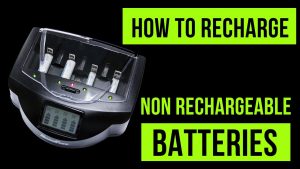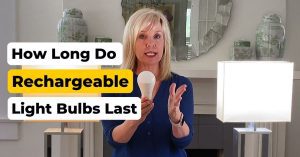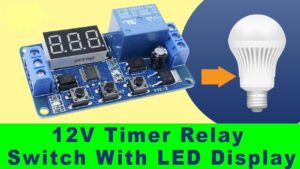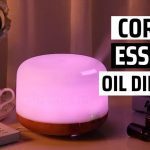Learn How Does Under Cabinet Lighting Work
The article will provide a guide on how under cabinet lighting work, the benefits of using this type of lighting, and the different types of under-cabinet lights available.
Under-cabinet lighting is a great way to provide light in your kitchen. It’s also an excellent way to make sure that you have enough light for cooking or other activities.
Introduction: Under Cabinet Lighting Guide
Lighting is an important aspect of a kitchen. It’s not only about the brightness but also about the color temperature. If you’re looking for a way to improve your kitchen, under-cabinet lighting might be just what you need. The lights are installed under the cabinets and, depending on the type of cabinet, can be installed either inside the cabinet or outside.
What are the Advantages of Indirect Under-Cabinet Lighting?
Under-cabinet lighting has many benefits that make it worth considering for your own kitchen:
- Better Visibility while Cooking or Preparing Food in the Kitchen: The most obvious benefit of under-cabinet lighting is that it makes the entire room brighter, which makes it easier to see what you’re doing in the dark corners of the room as well as in front of you on the countertop.
- Saves Space: It eliminates the need for other types of light fixtures, like pendant lamps and ceiling lights. The kitchen is the heart of the home. It’s where we spend time cooking, eating and spending time with family and friends.
How to Install Under-Cabinet Lighting in Your Kitchen?
Under-cabinet lighting is a great way to add some ambiance and style to your kitchen. It can also make it easier for you to see what you are cooking or doing in the kitchen.
There are many different styles of under-cabinet lights available, so you can find one that matches the look and feel of your kitchen.
Is Under Cabinet Lighting Worth It?
Under cabinet lighting can be worth it as it can provide task lighting in a kitchen or workspace, making it easier to see and work on countertops. Additionally, it can also serve as a decorative feature and add to the overall aesthetic of a room. However, whether it is worth it depends on your specific needs and preferences.
How Does Under Cabinet Lighting Work?
Under cabinet lighting typically uses LED (light-emitting diode) lights, which are energy-efficient and have a long lifespan. These lights can be installed under cabinets, shelves, or other structures to provide task lighting for countertops and other surfaces.
There are different ways to install under cabinet lighting, including:
- Hardwired Installation: This involves running electrical wiring from the power source to the lights. This type of installation is usually permanent and requires professional installation.
- Plug-in Installation: This type of installation uses a plug-in adapter that connects the lights to an electrical outlet. This method is often easier to install and can be done by a homeowner.
- Battery-Operated Installation: This method uses battery-operated lights that can be installed without the need for electrical wiring. However, the battery life may be limited, and batteries need to be replaced frequently.
Under cabinet lighting can be operated by a switch, a dimmer, or a smart home device such as a voice-activated assistant or a smartphone app.
Trending Today
How to Choose the Best Under Cabinet Lighting for Your Kitchen Design?
The right under cabinet lighting can be used in a variety of ways. You can use it as task lighting while working on the countertop or as accent lighting in specific areas of the room. A good source of light should be bright enough to provide ample illumination without too much glare, and not too harsh on your eyes.
How Many Lumens For Under Cabinet Lighting?
The amount of lumens needed for under cabinet lighting depends on the specific use case and the size of the area being illuminated. In general, task lighting (such as for a kitchen countertop) should provide about 300-500 lumens per foot of counter space.
However, the specific lumen output needed can vary depending on the size of the area, the color of the countertop and surrounding surfaces, and the overall brightness of the room. For example, a darker countertop may require more lumens to provide the same level of visibility as a lighter-colored countertop.
It’s also good to note that a higher lumen output will make the light look brighter and a lower lumen output will make the light look dimmer.
In addition, it’s important to note that the color temperature of the light is also important, warmer color temperature (2700K-3000K) tend to be more comfortable for the eyes while working, while cooler temperature (5000K-6500K) are more suited for task lighting in a garage or workshop.
It is recommended to consult with a professional or do some research on the type of task and the environment to get a better idea of the lumen output needed for under cabinet lighting.
Different Types Of Under Cabinet Lighting
There are several different types of under cabinet lighting, each with their own unique features and benefits. Some of the most common types include:
LED Strip Lights
These are flexible strips of LED lights that can be cut to size and easily mounted under cabinets. They can be powered by batteries, a plug-in adapter, or hardwired into an electrical circuit. LED strip lights are energy-efficient, have a long lifespan, and are available in a variety of colors and brightness levels.
Puck Lights|
These are small, round lights that can be installed under cabinets or in other tight spaces. They can be powered by batteries or plugged into an electrical outlet. Puck lights are available in a variety of finishes and can be used to create a variety of lighting effects.
Linear Lighting
These are long, thin lights that can be installed under cabinets or in other tight spaces. They can be powered by batteries or plugged into an electrical outlet. Linear lighting is available in a variety of colors and brightness levels.
Xenon Lights
These are a type of incandescent light that produce a warm white light. They have a long lifespan and are energy efficient but generate heat, so it’s important to be careful with the placement.
Halogen Lights
These are a type of incandescent light that produce a bright white light. They have a shorter lifespan than LED and Xenon, and generate more heat than LED and Xenon.
Smart Lighting
These are under cabinet lights that can be controlled by a smartphone app or voice-activated assistant. They can change colors, brightness levels, and can be scheduled to turn on and off automatically.
The type of under cabinet lighting that is best for you will depend on your specific needs and preferences.
These are some of the factors to consider while buying an under cabinet lighting.
- Motion Detection: Some rechargeable under cabinet lightings have motion sensors that detect human movement and light up. This saves on time that would otherwise be required to turn the lights on and off. It also reduces the chances of cross-contamination when preparing different types of foods.
- Battery Life: Rechargeable cabinet lights usually come with an inbuilt battery and the battery life varies from product to product.
- Brightness: The brightness of under cabinet lighting is usually measured in lumens and kelvin (degrees) scale. The higher the numbers, the brighter the light is.
- Method of Attachment: Some lightings use a 3M tape, double tape while others use screws or magnets. It is good to consider this depending on the type of cabinet you have.
- Build Quality: Different types of lightings are made from varying types of materials and workmanship which usually determine durability.
- Size and Shape: Various types of lighting come in different sizes and shapes which include circular and rectangular.
- Remote Control or Integration with Smart Home Devices: Some lightings can be controlled using a remote while others can be connected to smart home devices for even smarter control.
Conclusion
There are many benefits to using under-cabinet lighting in your kitchen. It will help you see what you are cooking better, make it easier to find ingredients, and give your kitchen an overall more pleasant ambiance.






















